This basic old fashion Irish Soda Bread recipe was planned to honor St. Patrick's Day. I ended up falling in love with it.
The recipe is an improved version of the traditional Irish bread, but it does not taste like cake. Perfect for the traditional Irish cabbage and corned beef meal.
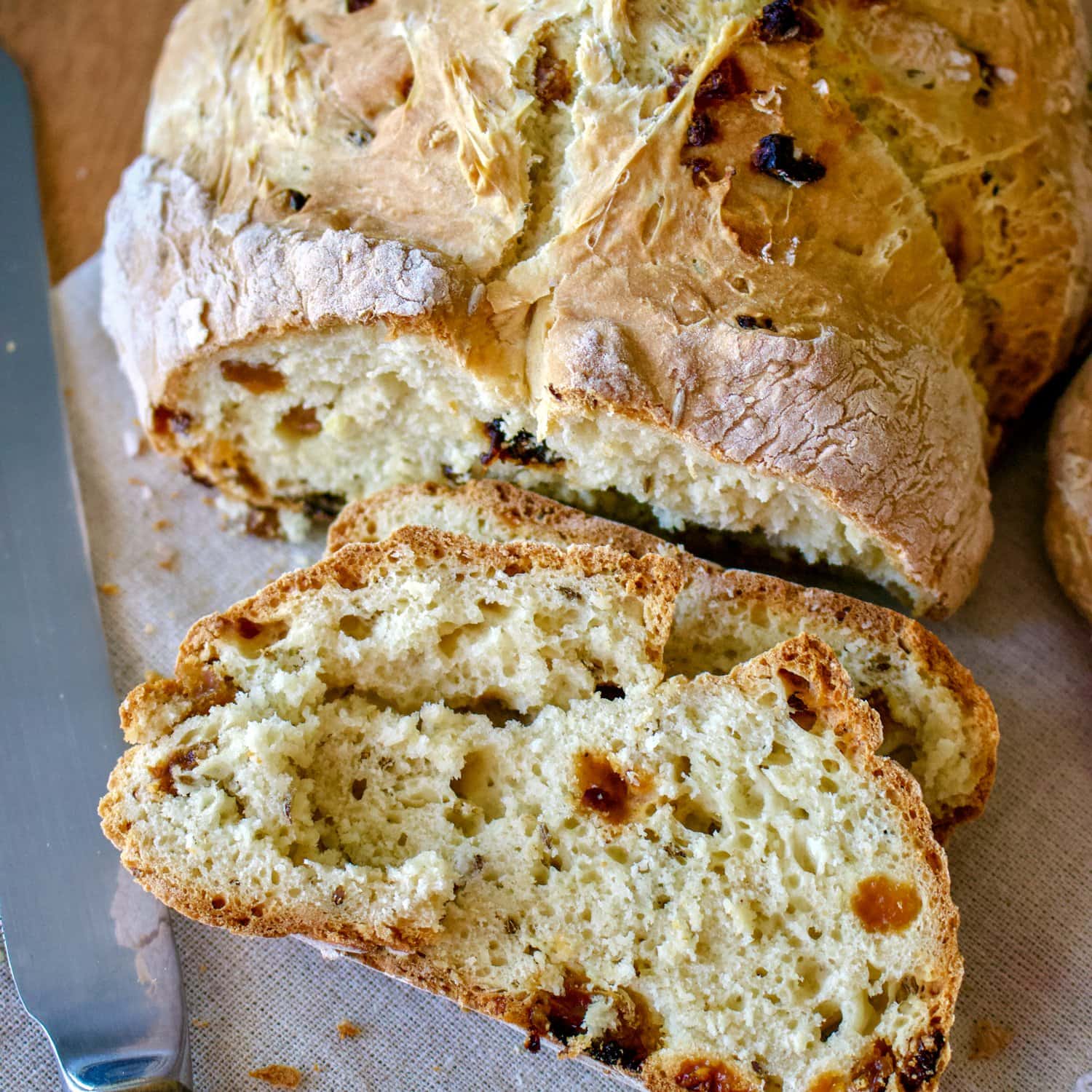
Jump to:
Why You Should Try This Recipe
This recipe was initially planned to honor St. Patrick's Day, which people worldwide celebrate in March every year.
I fell in love with this bread and decided that with the beer bread or the no-knead bread recipes, I make very often, this basic old fashion American-Irish soda bread will be one of my treasures.
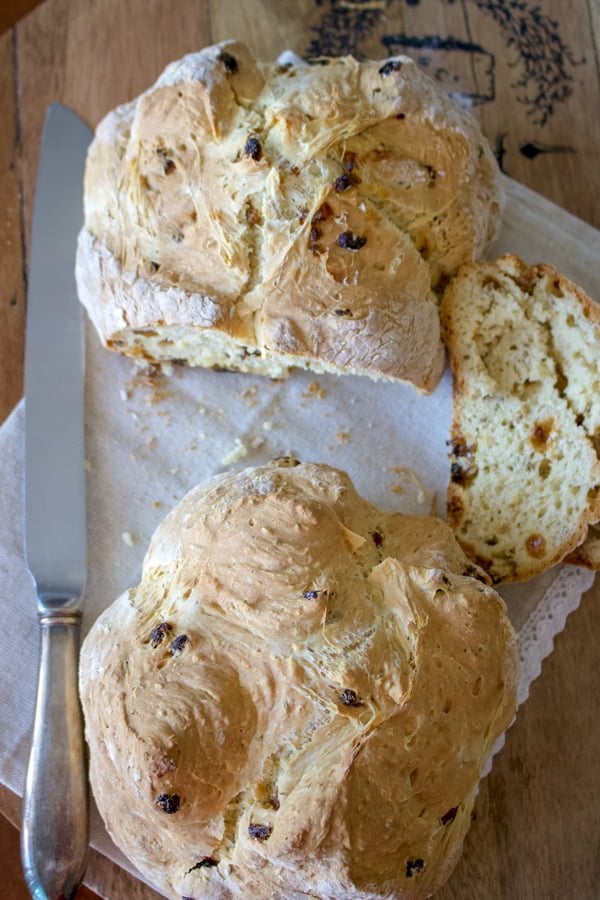
I found this recipe in a very old cookbook. I did some research, first in the old American books I own, starting with the oldest one I have from 1895, and to my surprise, I could not find any Irish soda bread at all.
I am pretty sure this bread was made in the 19th century. I just could not find a version of it anywhere.
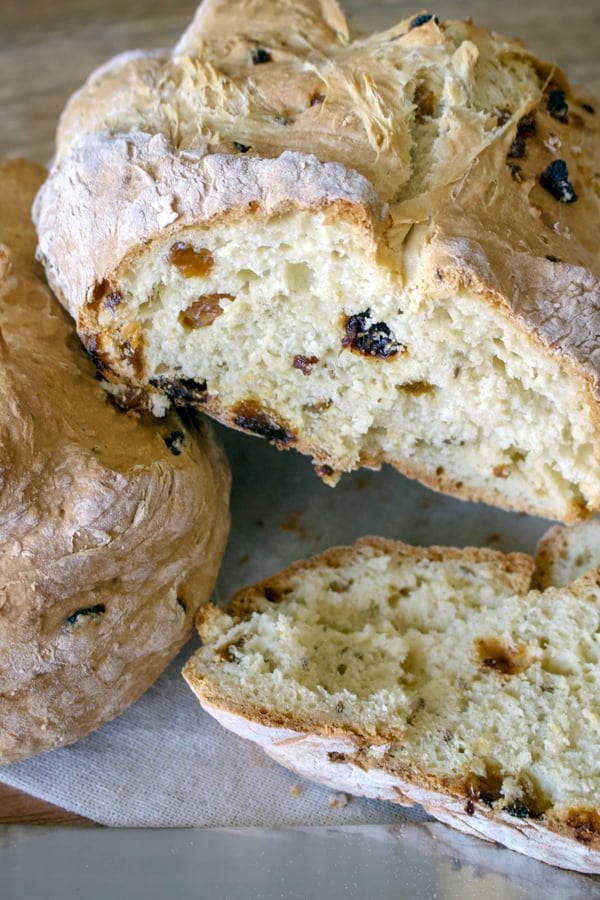
I was hoping that the 1930 edition of my Settlement Cookbook would have one, and there is, except that it is called Buttermilk Bread instead of Irish Soda bread.
I also looked into The Gourmet Cookbook from 1960. Bingo! This is what I was looking for, an old-fashioned Irish-American recipe that stands the test of time.
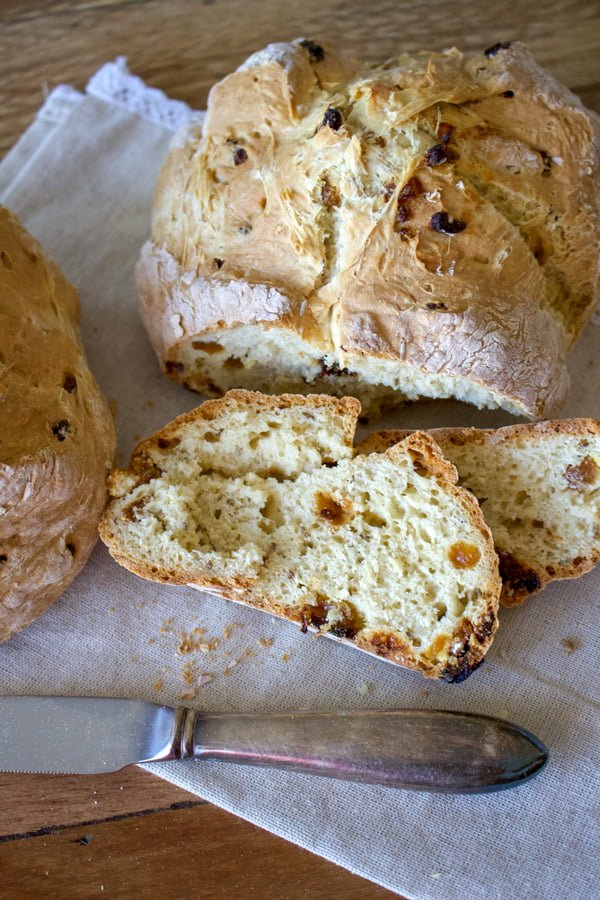
For sure, I did not want a "tea cake." I wanted a loaf of bread to be served daily. I was not looking for dessert. This recipe was the one.
A few thoughts regarding the recipe
- What I understand from all this research is that if your Irish soda bread has eggs, sugar, or milk, it's called "cake," not "bread." No offense, but by definition, this is true!
- I was not trying to be a purist here, but I had the feeling that the Irish did not even put raisins or caraway seeds in their bread. This must be an American thing. After spending some time on the internet doing research, I was right. The original, traditional Irish soda bread is made with only four ingredients: flour, baking soda, salt,, and buttermilk. And sometimes molasses, like in this recipe.
- This recipe from 1960 is trying not to upset anybody. It is an improved version of traditional Irish bread, but it is still bread.
- You can eat it with mild cheddar cheese, soup, or a salad, but it also goes well with butter and jam and a cup of coffee. It also has baking powder and also raisins, and caraway seeds, as the usual American addition to the recipe.
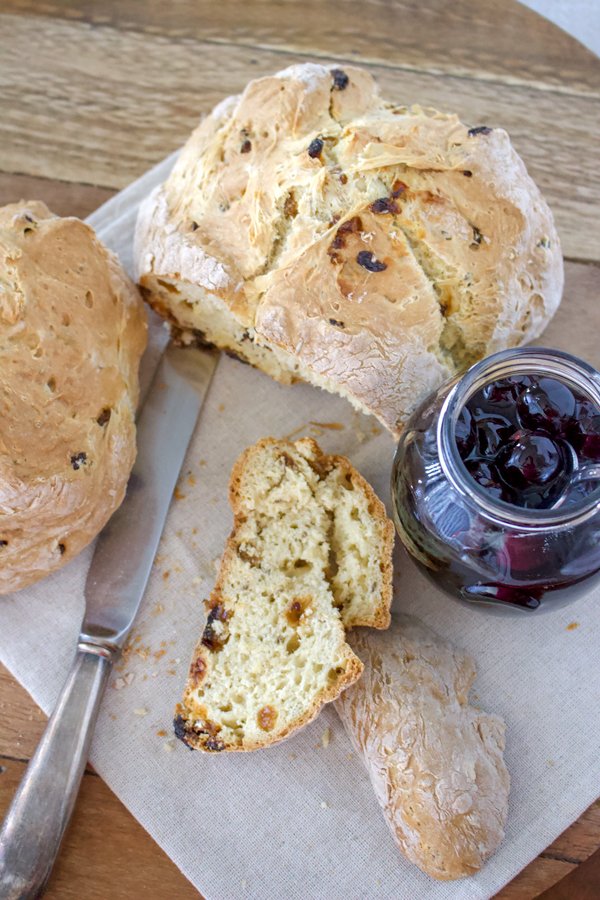
- It is a bit denser than yeast bread, with a mild sweetness from the raisins, which I found pleasant. However, Irish breads are dense and hearty, so it does have the right consistency.
- This recipe is very easy to make, uses clean ingredients, and is perfect with your traditional Irish cabbage and corned beef.
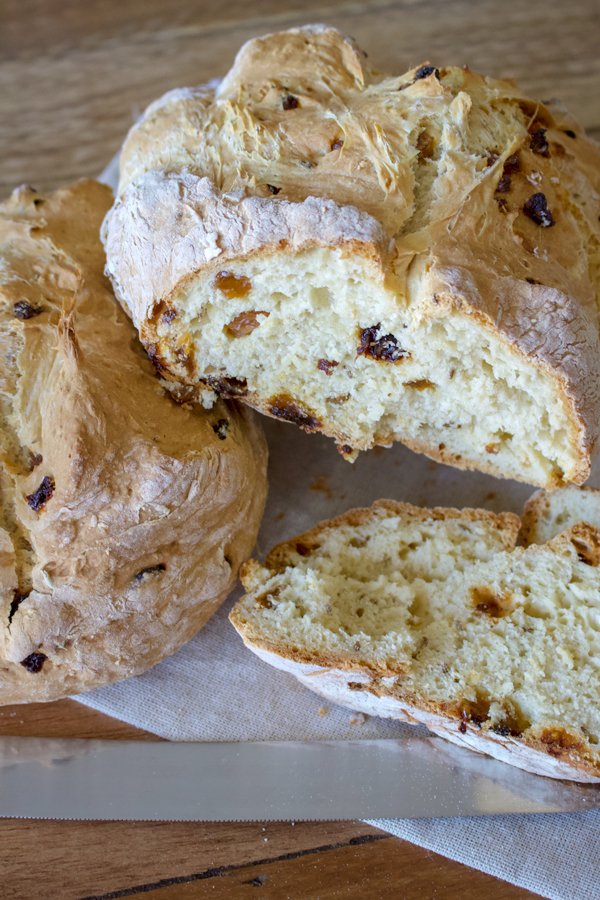
This recipe proved to be everything I needed and more. We had it fresh, out of the oven, with a little bit of butter, and also for dinner with soup, cheese, and apples.
It was divine! I could not tell that the bread was not made with yeast.
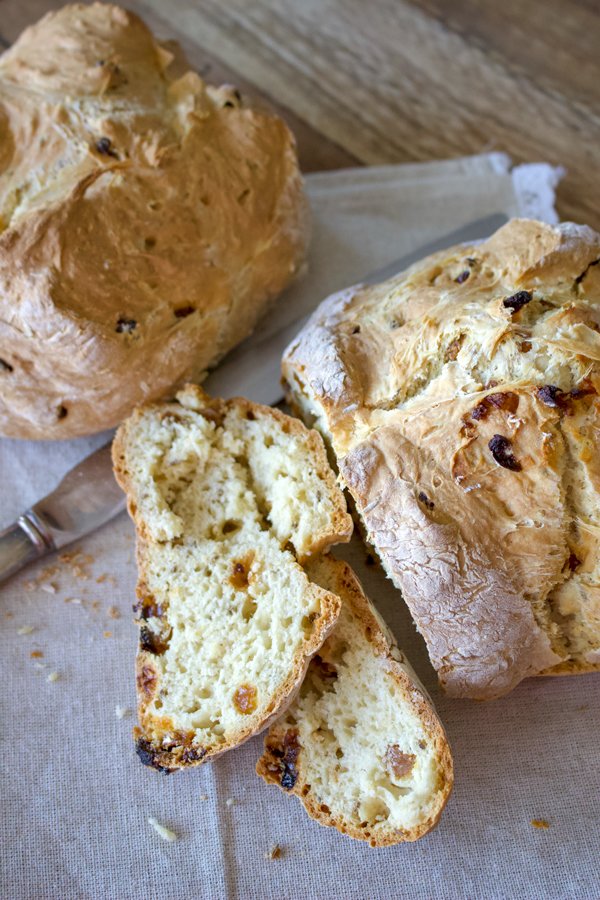
I hope you make it for St. Patrick's Day celebration! And if you don't have the time tomorrow, make it whenever you need some fresh bread.
If you do not like the raisins or the caraway seeds, leave them out. No big deal. It will be closer to authentic Irish soda bread from Ireland!
You only need an hour and ten minutes from start to finish to make it, and the results are wonderful! Ok, I will stop talking now and let you decide for yourself! See you next time!
More Quick Bread Recipes
📖 Recipe

Irish Soda Bread Recipe
Ingredients
- 4 cups sifted all-purpose flour
- 3 teaspoons baking powder
- 1 teaspoon salt
- ½ teaspoon baking soda
- 1 cup raisins
- 1 tablespoon caraway seeds
- 2 cups buttermilk or 2 cups milk and 2 tablespoons white vinegar or lemon juice
Instructions
- If you are going to make buttermilk from regular milk, start this process first.
- Add the vinegar or the lemon juice to a large measuring cup, and then add the milk. Let it rest for 5-15 minutes.
- Preheat oven to 350F/180C.
- Sift flour, baking powder, salt, and baking soda into a big bowl.
- Add raisins and caraway seeds.
- Stir well and add the buttermilk to make a soft dough.
- Turn the dough onto a lightly floured board and knead gently for a minute or until it is smooth and not sticky.
- Divide the dough in half and shape it into round loaves.
- Place on a lightly buttered baking sheet and bake for 50-55 minutes or until the loaves are a delicate brown.
- The bottom of the baked bread should have a hollow sound when tapped.
- Cool before cutting.

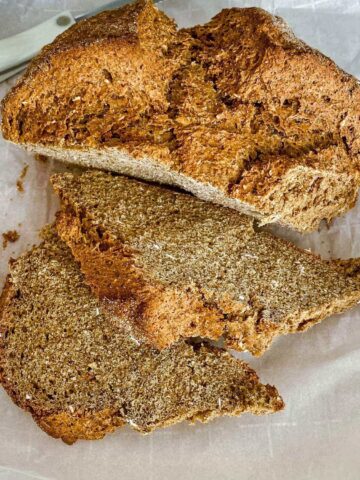
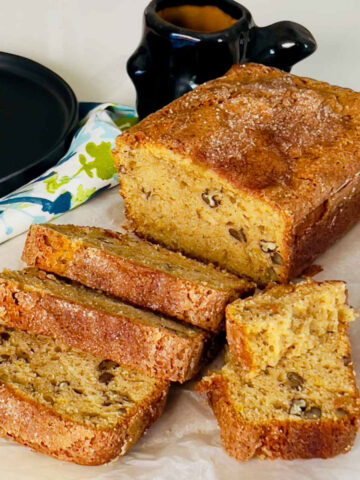
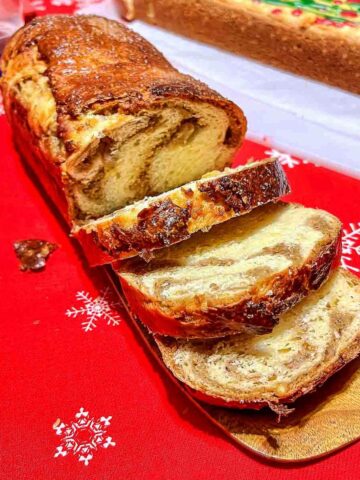
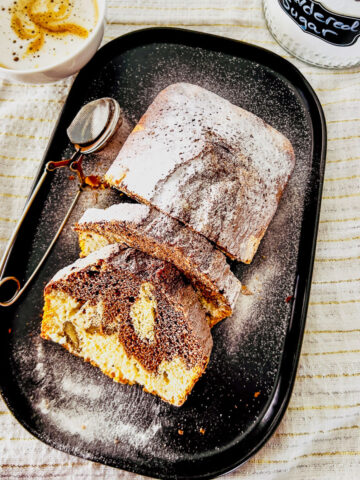
Ed O'Dwyer says
Probably the reason you found an "Irish Soda Bread" recipe in a 1960 cook book and not before that is because John F. Kennedy was elected President in 1960. There are few references before that in cookbooks. And, most American chefs couldn't resist updating the simple Soda Bread to make it their own recipe. So today we have soda bread with jalepenos, soda bread with orange zest and the sky is the limit.
BTW, in 19th and early 20th century Ireland the words "cake" and "bread" were interchangeable name for soda bread. Irish English, not American English.
Irish Currant Bread could not be made after 1911 in America since the were banned so raisins had to be substituted. What we see today is American currant bread morphed into American Raisin bread and the traditional soda bread was left behind.
Soda Bread and Currant Bread use the same basic recipe, but the currant bread in the 19th century was a special occasion bread.
Today the Irish can make currant cake it 7 days a week if they want. But, we need to remember that it wasn't always like that.
Cristina says
Fabulous!! I tried several Irish bread recipes along the years but this is the one I will keep making from now on. We almost finished the bread in one day! The taste is fantastic, with a combination of sweet, salty and caraway. It goes very well with breakfast, lunch or dinner, toasted or fresh. The recipe is very easy to make and the taste came out perfect even without the real buttermilk - I used lemon juice and milk instead. Thank you Gabriela for another wonderful recipe!
The Bossy Kitchen says
Thank you, Cristina, for your lovely comment! You describe it the best, it is easy to make and suited for any meal. A true gem, especially during the cold season.